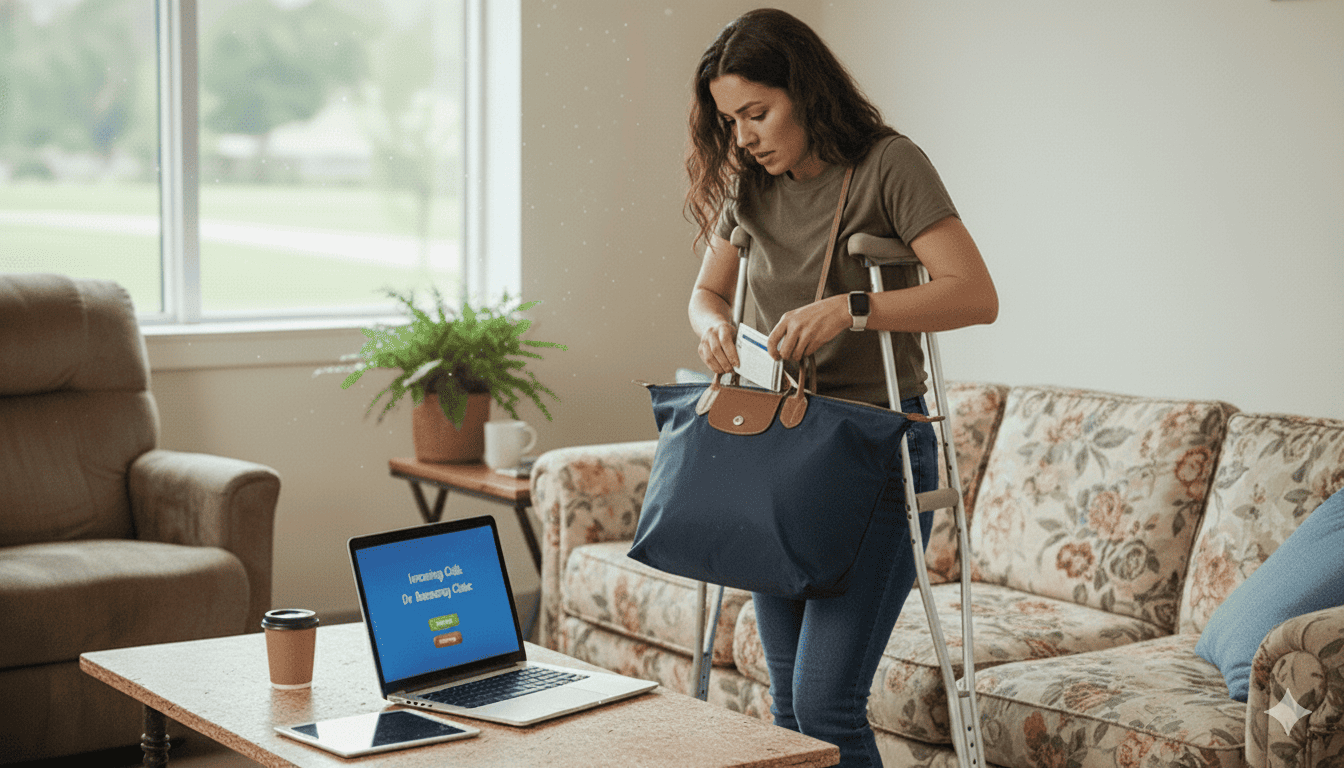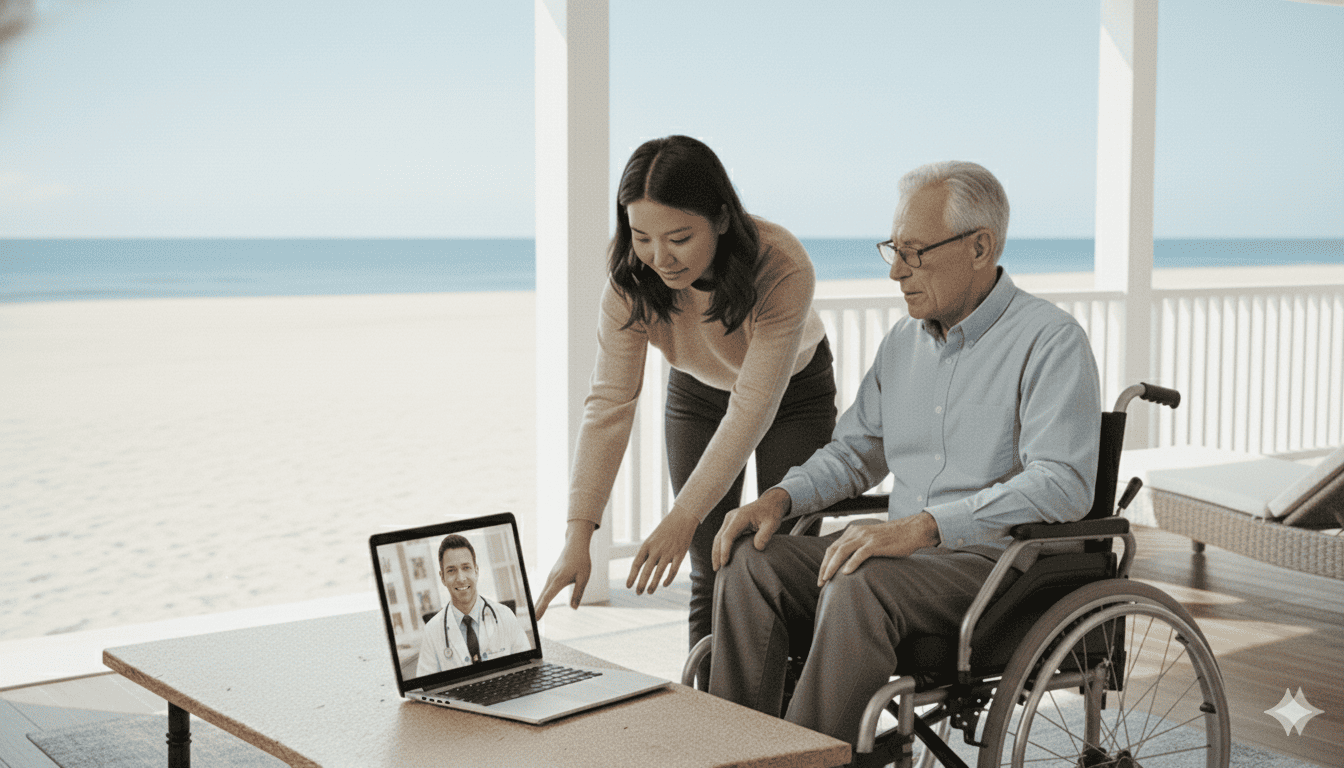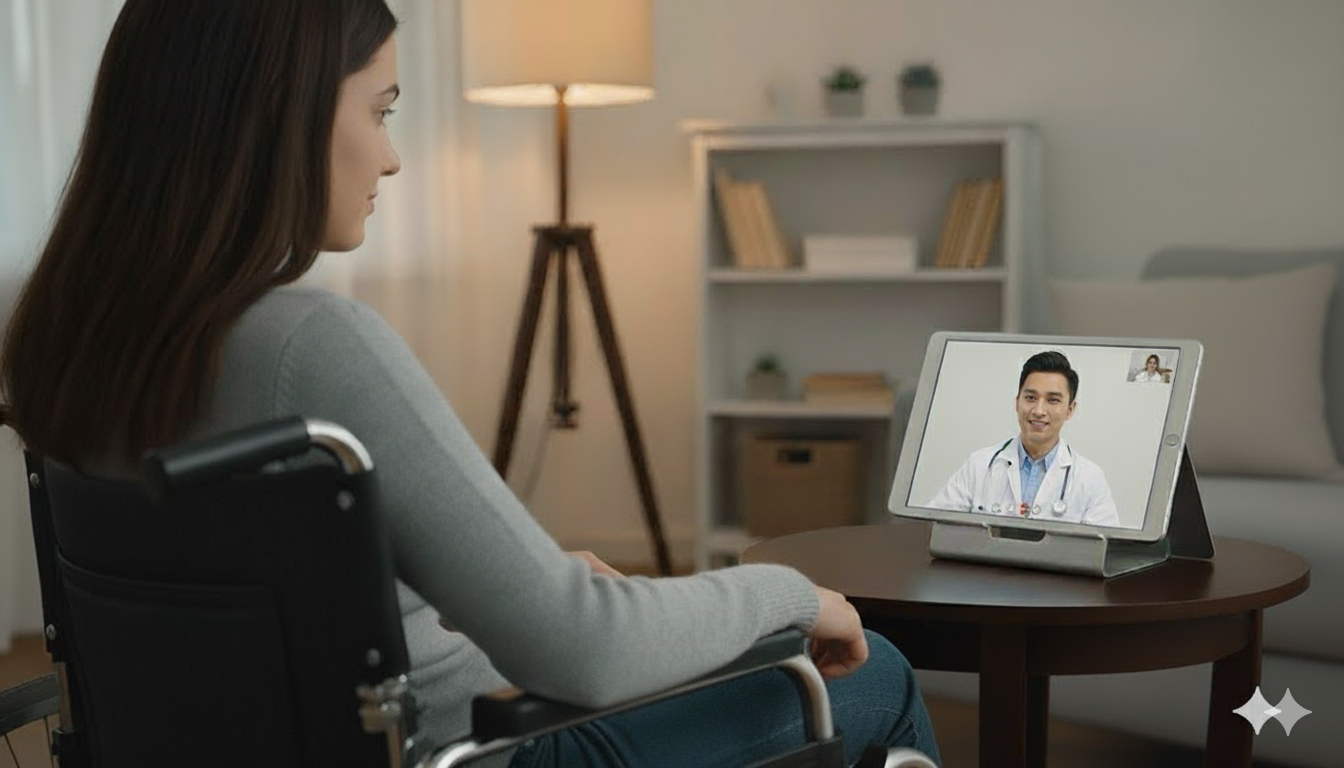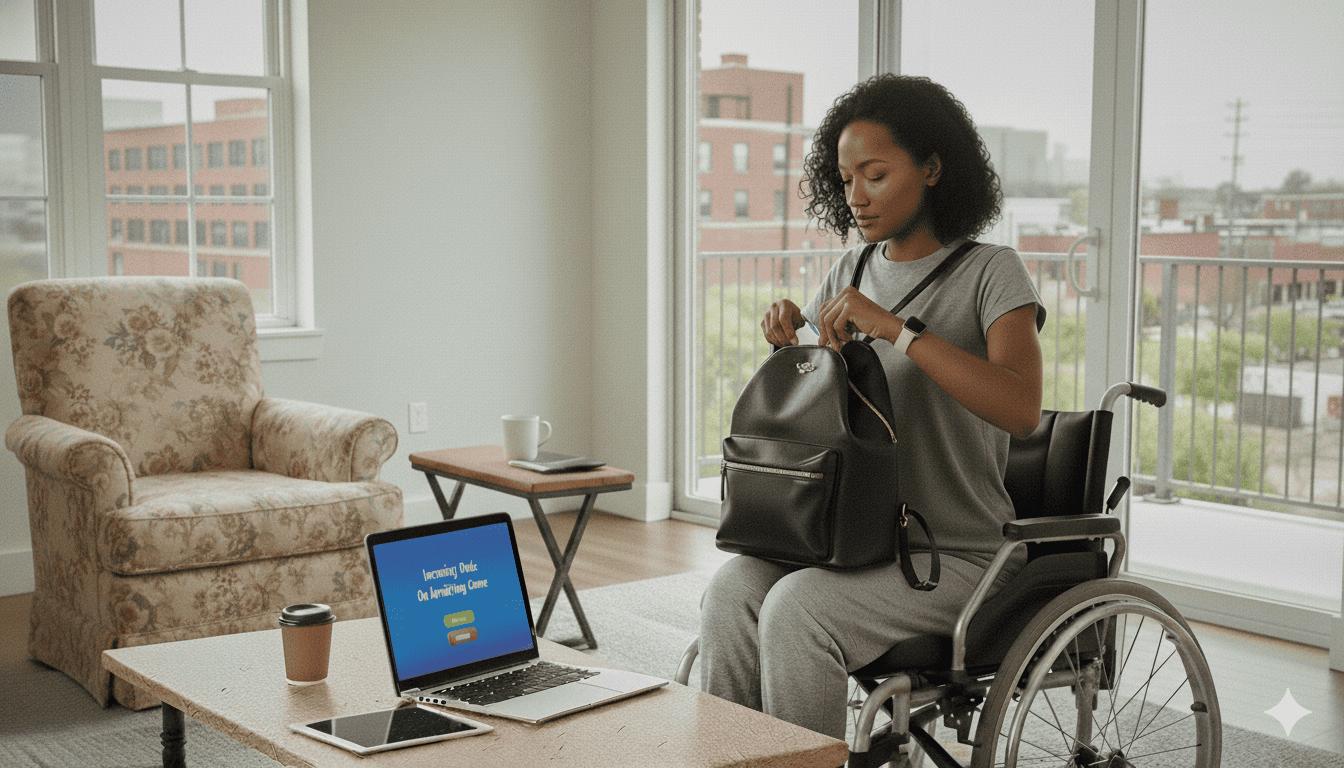How to Prepare for a Telehealth Visit in Athenahealth
💡 Knowing how to prepare for a telehealth visit in Athenahealth is key to good virtual care. Both patients and clinics play a role in preventing...
6 min read
Gregory Vic Dela Cruz : Oct 21, 2025 5:16:57 PM

Table of Contents
Test your device, camera, and microphone before your visit.
Access the secure telehealth link from your clinic’s reminder.
Complete intake forms and upload insurance details early.
Use a private, quiet, and well-lit space for better communication.
Clinics should send instructions, reminders, and support options.
Use only HIPAA-compliant telehealth tools like Curogram.
These tips are crucial to prevent delays, protect privacy, and ensure quality care. Curogram’s HIPAA-compliant telehealth platform enhances every step for stress-free virtual visits.
Telehealth has revolutionized how care is delivered. For patients, it means no travel time or waiting rooms. For clinics, it allows greater scheduling flexibility and higher appointment completion rates. But while the benefits are clear, successful telehealth visits don’t happen automatically.
Whether it’s poor internet, missing consent, or technical issues, small issues add up. They can quickly derail an appointment. The key to avoiding them is having a structured telehealth preparation checklist.
This guide explains how to prepare for a telehealth visit in Practice Fusion. It outlines step-by-step instructions for patients and clinics to ensure seamless, HIPAA-compliant experiences. You’ll also see real examples of clinics improving satisfaction and reducing no-shows.
Let’s start by exploring why preparation matters more than ever, even in virtual consults.
In our definitive guide, we discussed the best HIPAA-compliant telehealth platforms and which features to look for. But even the top virtual consultation apps fall short without the right preparation. Here's why getting ready before a virtual visit is important.
One of the most common frustrations during virtual care is poor connection quality or difficulty joining the visit. When patients test their devices and follow setup instructions ahead of time, clinics can start sessions on schedule. Practice Fusion users who send automated tech check reminders have seen significant drops in canceled or rescheduled appointments.
Telehealth relies on accurate, up-to-date patient data. Without completed intake forms or updated medication lists, providers may waste time gathering details mid-visit. A structured preparation workflow ensures all necessary information is securely collected in advance, streamlining the clinical discussion and enhancing care quality.
Preparation gives patients confidence and helps them communicate clearly. When patients feel ready — with notes, questions, and records nearby — the conversation flows naturally. Clinics that follow telehealth best practices report improved visit efficiency and stronger patient-provider relationships. Preparation transforms telehealth from a convenience into an extension of quality care.
Patients should verify that their internet speed supports video streaming and test both camera and microphone quality. Practice Fusion telehealth integrations through Curogram offer one-click access that simplifies this process — no app downloads required. Testing beforehand ensures smooth video and clear audio during the consultation.
Clinics send secure, encrypted links via text or email. Patients should use only the official link to protect privacy and avoid phishing attempts. Opening the link a few minutes before the appointment time ensures there’s enough time to handle last-minute technical adjustments.
Pre-visit digital forms allow patients to share medical histories, medications, allergies, and insurance details ahead of time. This integration between online patient forms and telehealth ensures the provider has all necessary information available in the EHR when the visit begins.
Patients should have any prescriptions, lab results, or notes handy. Writing down symptoms and questions ensures nothing important is missed. A simple preparation checklist keeps the visit organized and focused on care rather than logistics.
Lighting and sound affect the quality of virtual interactions. Patients should find a private, quiet room with good lighting, where they can speak freely without interruptions. This small adjustment greatly improves the provider’s ability to assess symptoms and communicate effectively.

Automated reminders play a vital role in ensuring patient readiness. Clinics using Curogram integrated with Practice Fusion can automatically send appointment reminders that include secure telehealth links. These reminders can also contain brief preparation tips, such as checking device functionality or completing intake forms before the visit.
Clear communication prevents last-minute confusion. Each reminder should include a quick-start guide showing how to join the virtual waiting room, what devices are supported, and how to troubleshoot common issues. Some clinics even send short instructional videos that walk patients through the login process.
Not every patient is tech-savvy. Offering a test call or support hotline helps patients gain confidence before their first telehealth appointment. A quick pre-visit walkthrough minimizes the chance of connectivity issues during the real consultation and reduces the stress of navigating unfamiliar systems.
Telehealth visits must meet strict privacy standards. Clinics should remind patients to avoid public Wi-Fi and conduct sessions in private spaces. Before the visit, staff should verify consent and ensure all HIPAA-compliant telehealth visit setup policies are followed. This helps protect both the patient and the clinic legally and ethically.
Analyzing missed appointments helps identify recurring challenges. If patients frequently forget to log in or misunderstand instructions, clinics can modify their reminder timing or wording. This continuous improvement loop ensures a more consistent telehealth attendance rate over time.
Some clinics still rely on consumer-grade video platforms, which can expose patient data. Non-secure apps lack proper encryption and audit logging, putting clinics at compliance risk. Always use healthcare-grade telehealth tools like Curogram, which provide HIPAA and SOC 2 compliance for all telehealth interactions.
Identity verification is a crucial step that ensures patient safety. Clinics should confirm patient identity through birth dates, photo IDs, or record verification before each session. This reduces errors and prevents potential fraud during virtual consultations.
Even the best technology can fail unexpectedly. Clinics should always have backup communication options such as secure messaging or phone calls. A documented fallback process ensures patient care continues without disruption.
A small family practice used automated text reminders with telehealth links and instructions. Within two months, no-show rates dropped by 25%. Patients appreciated the clear communication, and providers reported smoother appointment flow.
A specialty clinic introduced pre-visit instructional messages and one-click access through Curogram. Satisfaction scores rose from 4.1 to 4.8, proving that proactive preparation enhances both patient experience and provider efficiency.
An independent clinic integrated digital intake forms with telehealth scheduling. This eliminated the need for manual form processing, saving staff more than 10 hours per week and ensuring accurate patient data before every virtual appointment.
Curogram integrates directly with Practice Fusion, syncing appointments, patient data, and communication logs. This automation reduces administrative work, keeps records up to date, and allows clinics to deliver efficient, secure, and professional telehealth experiences every time.
Curogram’s telehealth system offers effortless access for both patients and providers. There are no apps to install — patients simply click a secure link sent via SMS or email. This simplicity eliminates confusion and makes it easy for even first-time users to connect confidently.
Every telehealth session through Curogram meets the highest standards of security and compliance. Encrypted data transfer, access logs, and secure cloud storage protect patient information throughout the entire virtual care process.
Telehealth has become an essential part of modern healthcare. However, its success depends on preparation. Both patients and clinics must follow best practices to ensure productive visits.
A few simple steps — testing, submitting forms, and reviewing instructions — go a long way. The correct preparation can turn telehealth from a challenge into a seamless experience.
Curogram provides the perfect solution to simplify telehealth preparation. Its automated reminders, secure connections, and direct integration make setup easy. The result? Fewer technical issues, better patient satisfaction, and stronger provider relationships.
Want stress-free telehealth visits? See how Curogram integrates with Practice Fusion to deliver secure, patient-friendly telehealth experiences. Book a quick demo today.

💡 Knowing how to prepare for a telehealth visit in Athenahealth is key to good virtual care. Both patients and clinics play a role in preventing...

💡 How NextGen users can improve patient access with telehealth means eliminating barriers. These challenges include distance, scheduling conflicts,...

💡 Preparing for a telehealth visit in Tebra ensures smoother appointments. These tips lead to fewer technical issues and better communication....